Main ports
In oceanic quests, ships were as important as the ports the different fleets called at on their routes. Although initially ports were places where ships could seek shelter and protection, they also provided multiple services to ships, such as the manufacture, maintenance and repair of ships, provision of supplies, a watering place for ships, a resting place for crews and a place where markets were held and goods going to or coming from the metropolis were traded.
And while ports were often born out of the need for shelter or water and food supply, their consolidation and transformation into new settlements, fair and trade centers, in parallel with sea travel, have played a key role in globalization.
In this section we will go through some of these ports using the descriptions and illustrations made by Nicolás de Cardona in 1632.
Driven by a desire to please King Philip III and the Count-Duke of Olivares, he compiled a list of islands (both inhabited or uninhabited) and a map that shows the itinerary of his adventures while also outlining many of the ports used by fleets on their routes for over three centuries.
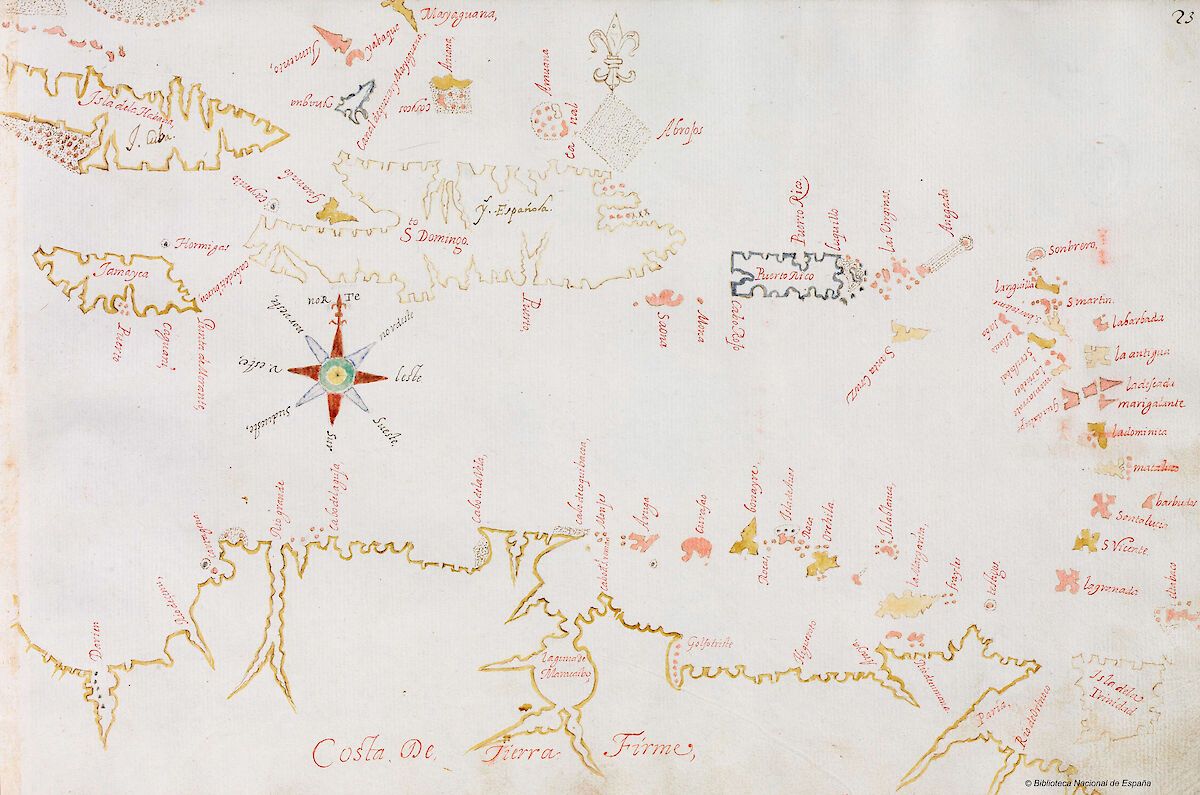
Acapulco (MEX)
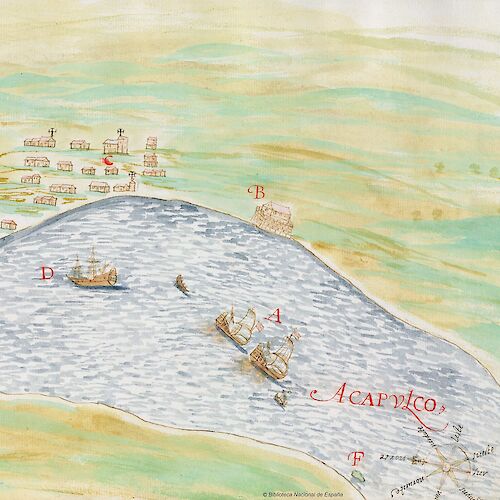
Hernán Cortés decided to establish a base in Acapulco for the construction of galleons which were destined to sail the Pacific and South Seas. But it wasn’t until 1565, when Fray Andrés de Urdaneta arrived at Acapulco Bay, that this port became the destination of the famous route of the Manila Galleon.
Cadiz (ESP)
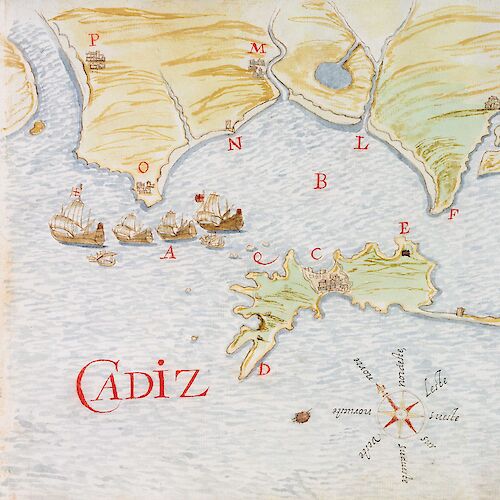
Because of the strategic position of the port of Cadiz between the Atlantic and the Mediterranean and its proximity to Africa, this port has been used since ancient times. After the fall of the Roman Empire, it did not regain its significance and status until the 15th century, thanks to the creation of the commercial city and port, which were to serve as a base for naval expansion to the south.
Cartagena de Indias (COL)
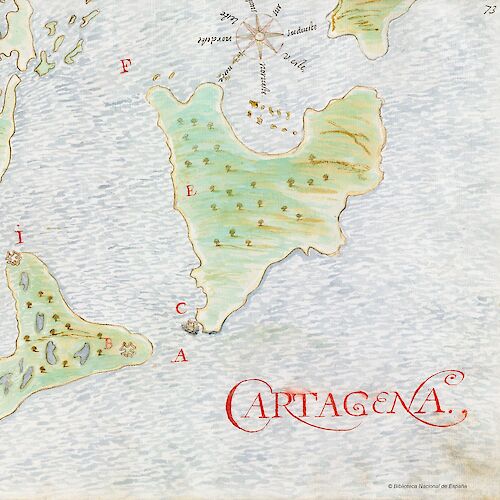
This was the most important city and port of the viceroyalty of New Granada and one of the best fortified enclaves in the Caribbean. It belonged to the Spanish crown for more than 275 years, until 1811.
Ferrol (ESP)
Ferrol was originally a fishing port, but its development was mainly due to Philip V in the 18th century, when he recognized the strategic value of its estuary and built the arsenal of A Graña and its shipyards.
Havana (CUB)
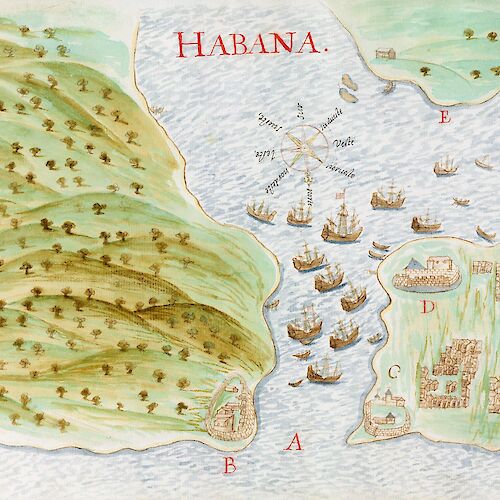
Havana Bay is considered one of the safest natural shelters in the Caribbean and the Americas. Its importance is evidenced by the fact that it was known as the “Key to the New World and Antemural of the West Indies”.
Manila (PHL)
Valuable goods from the Orient such as silk, porcelain, tea and the valuable spices needed for food preservation departed regularly from this port. Even though it had been previously explored by Magellan, it was not until 40 years later that the route known as the Manila Galleon was finally established.
Nombre de Dios (PAN)
Nombre de Dios was the first port on the American continent for the Spanish treasure fleet. It served as an important port, as it connected the Caribbean Sea and the recently created city of Panama, located on the Pacific, with which it was linked by a paved road known as the Camino Real (the King’s Highway).
Panama (PAN)
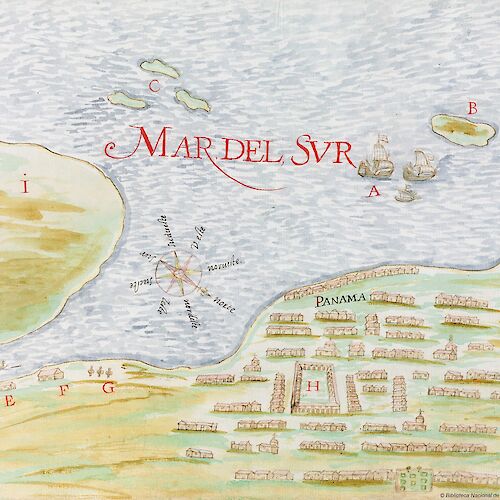
Panama City was founded on August 15, 1519 by Pedro Arias Dávila, and became the starting point for the exploration of Peru and, eventually, the destination for the silver of New Granada and the gold of Peru.
Pensacola (FLA)
The first documented presence of Spaniards dates back to 1528 with the expedition led by Pánfilo de Narváez. Years later, in 1559, Tristán de Luna y Arellano tried to turn the bay into a bridge to colonize Santa Elena (what would later be known as La Florida).
Portobelo (PAN)
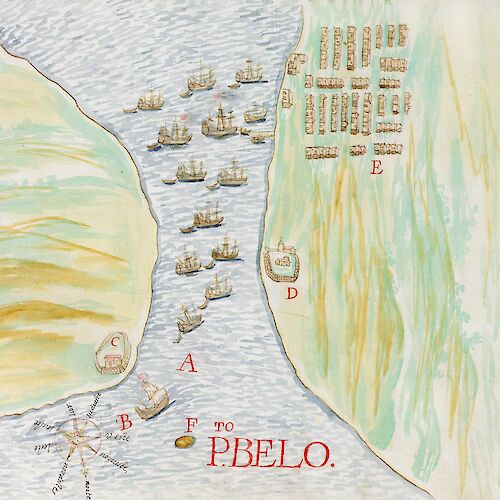
This bay was already known as a safe haven since Columbus’s fourth voyage in 1502. The beauty of the place, its natural resources and natural protection were the reasons why it was given the name “Porto Bello” (Beautiful Port).
St. Augustine (FLA)
St. Augustine has been recognized as the oldest European settlement in the territory of the present-day United States. Many Spanish conquistadors explored the area in the conquest of La Florida, but none of them established any stable settlements.
Santo Domingo (DOM)
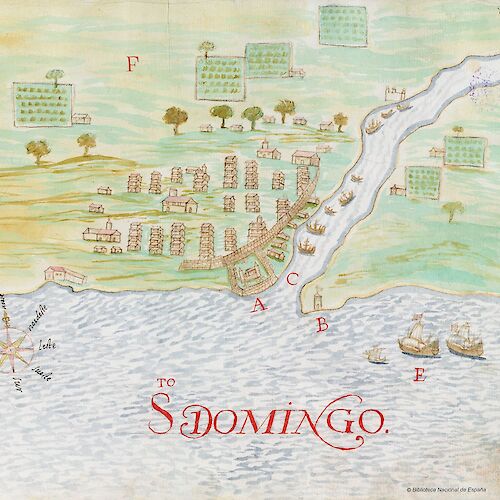
This is the oldest port in the New World, located on the island of Hispaniola (La Española), which was the first Spanish territory in the New World. This was the first active port and the place where the population of La Isabela, the first settlement founded by Columbus, moved to.
San Juan de Puerto Rico (PRI)
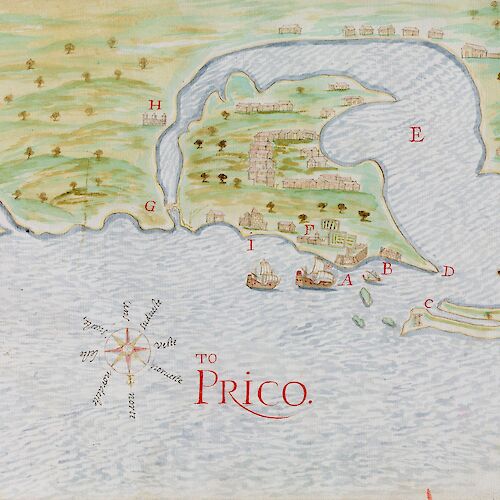
The island where it is located was one of the first places discovered by Columbus. It was soon fortified, becoming a strategic military location for the defense of the territory against attacks by foreign powers, in the fight for the conquest of the Caribbean. Some of its fortifications still stand today.
Seville (ESP)
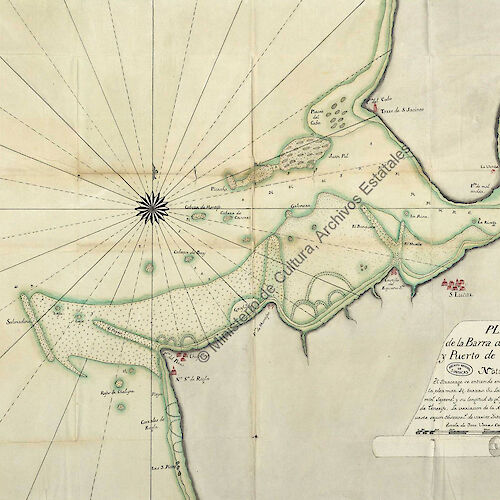
It was in 1503, when the Casa de Contratación (House of Trade) was set up and the city was granted the exclusive right to trade with the New World, that Seville reached its maximum splendor, sharing its activity with the rest of ports and concentrating bureaucratic activity.
Veracruz (MEX)
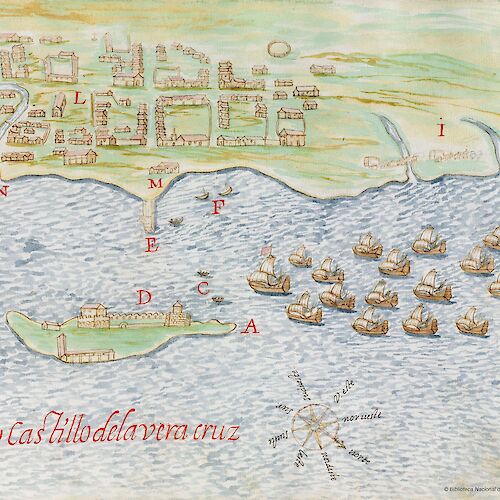
This port played a crucial role during the three centuries of the Viceroyalty of New Spain, as this was the point of departure for ships bound for Spain loaded with gold, treasures and goods in the so-called Carrera de Indias (the West Indies trade route); which is why it was attacked on several occasions by pirates and corsairs.